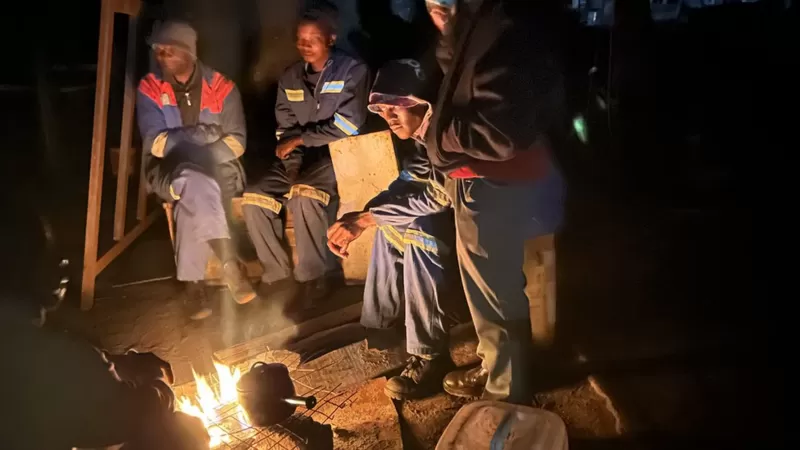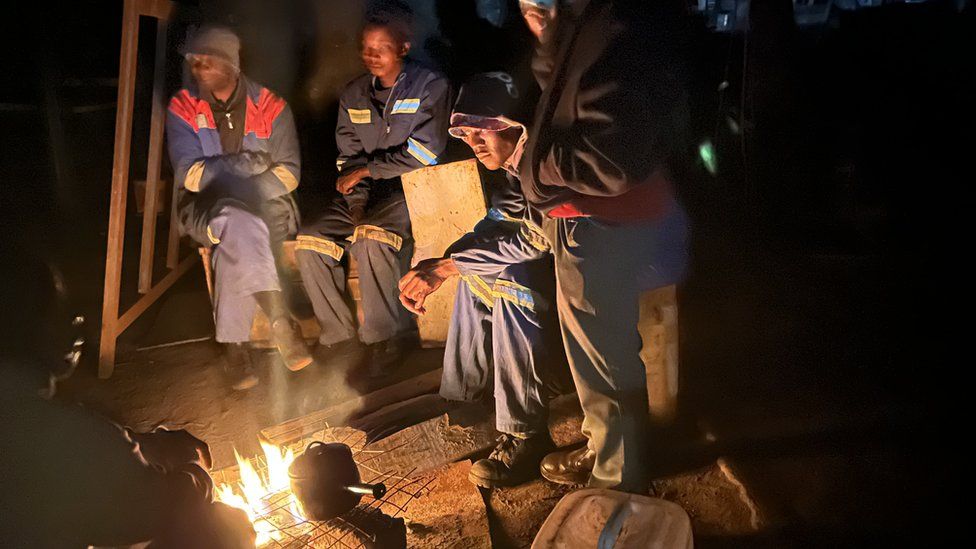
It is after ten o’clock at night, and Zimbabwe’s capital Harare is uncharacteristically dark.
Chatter and laughter emerge from a small factory inside the Willowvale Industrial Park.
Men in overalls sit around a small fire under the moonlight, waiting for the few hours of power so they can work.
Outages are normal in Zimbabwe, but rarely are they this severe.
“There is no schedule – yesterday we got it at 10 past 10 but it is passed that time now,” George Sadziwa told the BBC, as he walked around his power-hungry metal fabrication machines. His company Geosad Engineering has orders to make ore grinding mills, fuel and gas storage tanks, but he is worried they could fail to meet the delivery dates.
Electricity is very essential in our business… From what the government officials are saying we hope this [situation] should turn around soon. If it doesn’t it will be a disaster.”
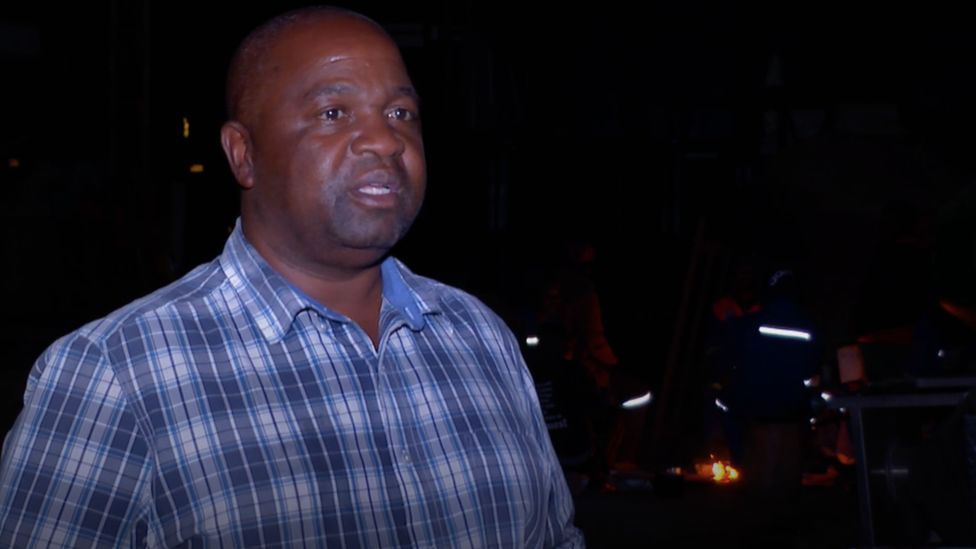
A phone call to the power utility confirms that there is no schedule for the return of the electricity. He is told to expect the power between 11pm and midnight.
Some of his business colleagues have started working at night too, George said. Ordinary Zimbabweans are also being forced to change their schedules, to wake up at midnight to iron their clothes, to use electric appliances and to catch up on the World Cup matches.
Zimbabwe has sunk about $2 billion dollars (£1.6bn) into power generation in the last decade. But the country still struggles with outages.
The crisis came to a head in the last fortnight, when the Zambezi River Authority ordered Zimbabwe’s Kariba South power station to shut due to dangerously low water levels.
Experts say the country’s coal-powered thermal plants are supposed to supply the baseload power, but the aged generators frequently break down. It has forced authorities to draw heavily on Kariba, exhausting the annual water allocation and eating into neighbouring Zambia’s share. Water levels were already low because of successive droughts.
The country is currently producing about 600 megawatts (MW) of power against a daily demand of about 2,000MW.
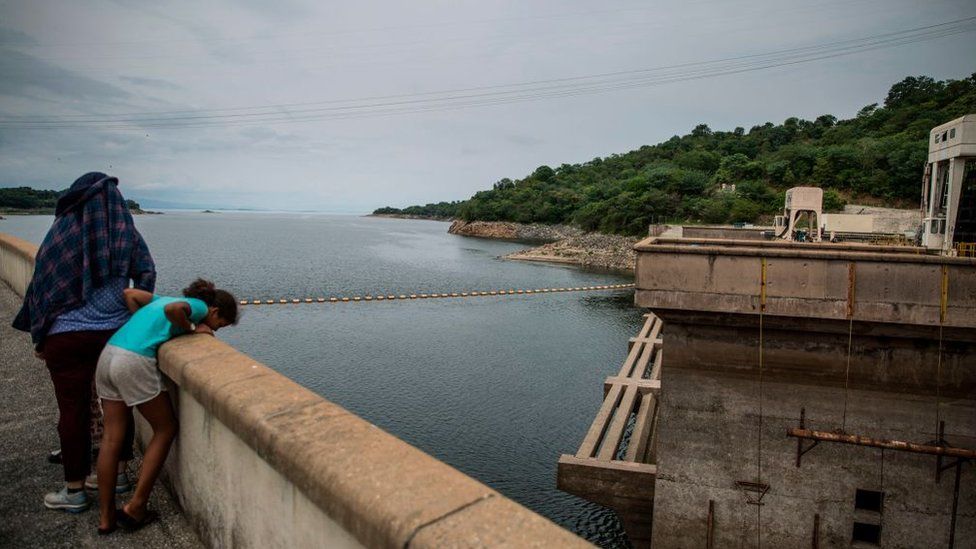
Zimbabwe has been allowed to continue generating up to 300MW from Kariba, energy secretary Gloria Magombo has said. The river authority will review the water levels in early January following the start of the rainy season.
In the crisis, locals are finding humour.
In one social media post an unidentified Zimbabwean demonstrates how to iron their clothes without power – by sliding a pot of boiling water across the garment.
The frustration remains. Just outside the Central Business District in the low income suburb of Mbare, 43-year-old Wella Chidziva struggles to light a fire to warm up her leftovers before the rain and darkness fall.
She has gathered empty plastic packets from the street to start the fire – gas is too expensive, she says. In the last two weeks, Chidziva paused her chicken selling business because of the outages and after thirty chickens rotted in her fridge.
The electricity comes at midnight, and by 4am there will be no electricity, she told the BBC. The three different families that share the single home are fighting each other for firewood.
“We now give each other chances to cook, one over there and other there,” she said, pointing around the small backyard. “It’s the same as not having electricity because when it comes around [midnight] the children are sleeping. Now we are in [the Christmas period] I don’t know what we are going to do.”
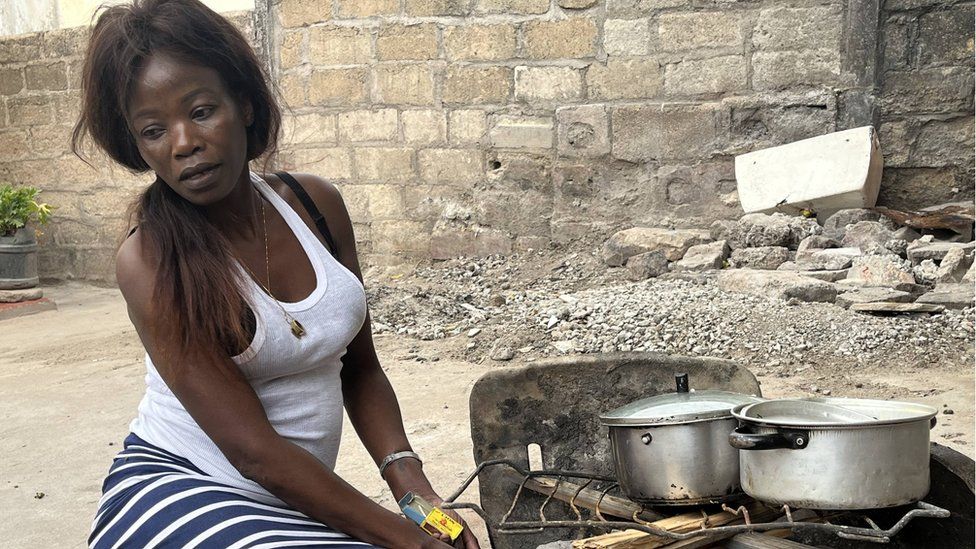
Zimbabwe has spent US$2 billion dollars investing in energy products: $533 million, financed by China’s Sinohydro, to expand Kariba power station and add 300MW of capacity, and US$1.4billion for new units at the Hwange Thermal power station, to add 600MW to the grid. Hwange however has suffered Covid-19 pandemic-related and payment delays.
“We have not invested when we were supposed to,” according to energy expert Victor Utedzi. He founded the solar farm Centragrid, 30km (19 miles) north-west of the capital, and is in the process of expanding it from a 2.5MW to a 25MW plant.
“There is no easy and quick solution to power problems,” he told the BBC.
“A simple PV solar power plant [takes] three to four years [to set up]. Thermal power plants, to plan and raise financing to build, takes about a decade. A project like Batoka [Gorge Hydroelectric Power Station] – our energy regulator says to expect it in 10 to 15 years. These are the large projects you need to dent the problems we are facing. You never come out of it in a short period of time.”
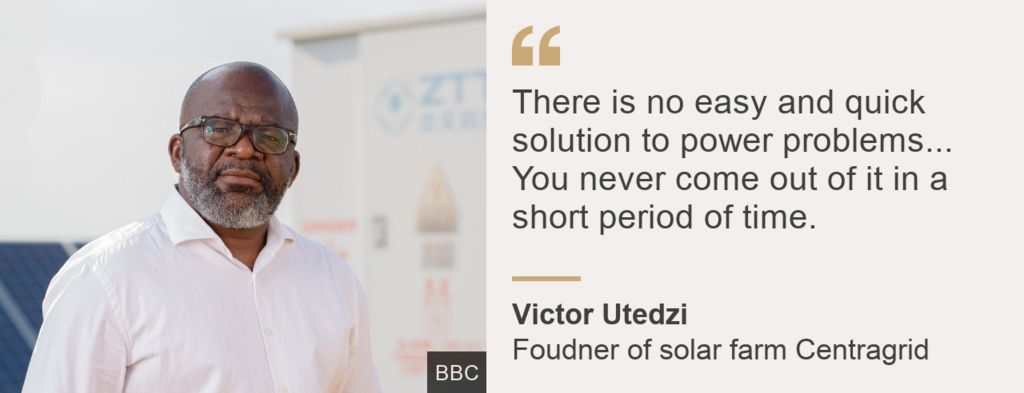
Zimbabwe plans to import 500MW of power from neighbouring Mozambique and Zambia, but crisis-hit South Africa is also competing for the same power to shore up its shortfall. Zimbabwe has already spent over a billion US dollars in imports over the last decade but financing for renewable energy remains low.
“Investors are not certain they will get their money out,” Mr Utedzi said. “There is a need to create conditions that have attracted financing that others in the region have.”
The government believes the problems are temporary and targets 3,500MW of power generation within the next two years. In the short term it says one more unit at the Hwange thermal power station will be commissioned by the end of the year, adding 300MW to the grid, and that water levels are beginning to rise again at Kariba.
While these won’t end the power outages, Wella Chidziva hopes that it will enable the lights to be turned back on in time for Christmas.
